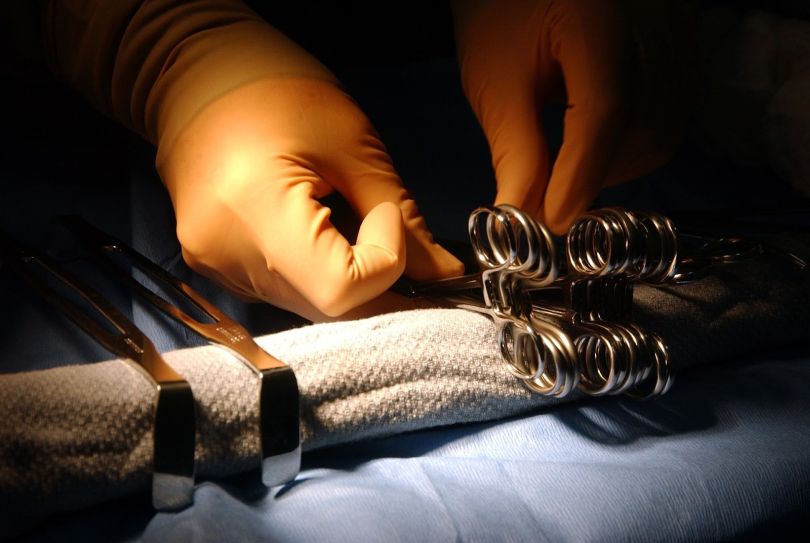Don’t Suffer Anymore – Learn How To Deal With Deviated Septum

Have you been experiencing constant nasal congestion, difficulty breathing, or frequent nosebleeds? If so, you might have a deviated septum. This common condition occurs when the thin wall between your nasal passages is displaced, making it harder for air to flow through your nose. Many people suffer in silence, thinking that these symptoms are just part of their normal life. However, a deviated septum can significantly impact your quality of life and even lead to sleep apnea or other respiratory issues. In this blog post, we will explore what a deviated septum is, its symptoms, and most importantly, how to deal with it. Don’t suffer anymore; read on to learn how to breathe easy again!
What is a Deviated Septum?
A deviated septum is a common condition where the thin wall between the nasal passages is displaced to one side, making one nasal passage smaller than the other. This displacement can be caused by trauma to the nose, congenital issues, or other medical conditions. A deviated septum can cause nasal congestion, difficulty breathing through the nose, nosebleeds, snoring, and recurrent sinus infections.
Many people may not realize they have a deviated septum until they experience symptoms. People may ask, can you fix a deviated septum without surgery, and is there any way to deal with it? In severe cases, surgery may be required to correct the condition. However, non-surgical treatment options are available to alleviate the symptoms of a deviated septum, including using a nasal decongestant or steroid inhaler, a saline nasal spray, and anti-inflammatory medications.
If the symptoms of your deviated septum are affecting your quality of life, it is important to seek medical attention. Your doctor can help determine if a deviated septum is causing your symptoms and will be able to recommend the best treatment option for you.
Symptoms of a Deviated Septum
A deviated septum can cause a variety of symptoms, which may vary in severity from person to person. Here are some common symptoms of a deviated septum:
- Nasal congestion: Difficulty breathing through one or both nostrils.
- Recurrent sinus infections: Blended nasal passages lead to inflammation and infection.
- Frequent nosebleeds: Due to the dryness and irritation of the nasal tissues.
- Headaches: Pain in the forehead or face due to pressure build-up.
- Snoring: Difficulty breathing through the nose during sleep, leading to snoring.
- Sleep apnea: A sleep disorder characterized by pauses in breathing during sleep.
- Facial pain: Due to sinus pressure or inflammation.
- Postnasal drip: Excessive mucus production that drains down the back of the throat.
If you are experiencing any of these symptoms, it is essential to consult a doctor to determine if you have a deviated septum and to explore appropriate treatment options.
How to Deal With Deviated Septum
Once your doctor has confirmed you have a deviated septum, there are several treatment options available. Depending on the severity of your condition and symptoms, they may recommend non-surgical or surgical treatments.
Non-surgical Treatments
Below are some of the non-surgical treatment options for a deviated septum:
- Use a nasal dilator: This device can help widen the nasal passages and improve airflow. The devices come in various sizes and styles, so your doctor can help determine which one is right for you.
- Take anti-inflammatory medications: These medications can reduce swelling and allow the nasal passages to open up more.
- Steroid inhalers: These inhalers help to open up blocked airways and reduce
- Nasal decongestants or steroid inhalers: These medications can help reduce inflammation and congestion in the nasal passages. They work by shrinking the blood vessels and reducing mucus production.
- Saline nasal spray: Saline sprays help cleanse the nose, reduce irritation, and soften mucus so it can be more easily expelled. They can also help to reduce swelling in the nasal passages.
- Anti-inflammatory medications: These medications, such as ibuprofen or aspirin, work by reducing inflammation and swelling. They can help relieve facial pain associated with a deviated septum.
Surgical Treatments

In cases where non-surgical treatments are not effective or the severity of the condition warrants it, surgery may be recommended. Surgery for a deviated septum is done by an ear, nose, and throat specialist (ENT) and is generally performed under general anesthesia.
During the procedure, the ENT will reshape or remove portions of the nasal septum to open up blocked nasal passages and restore proper airflow. After the surgery, you may experience some swelling and discomfort, but this should subside over time.
Recovery from a deviated septum repair typically takes a few weeks, although it can take several months to fully recover. During this time, following your doctor’s instructions for post-operative care is important to ensure a successful outcome.
It is also important to note that deviated septum repairs do not always prevent future symptoms from occurring, so it is important to follow your doctor’s instructions to prevent the recurrence of the condition.
In conclusion, a deviated septum is a common condition that can cause symptoms such as nasal congestion and facial pain. Both non-surgical and surgical treatments can be used to treat this condition. It is important to follow your doctor’s instructions for post-operative care after surgery to ensure successful results and prevent the condition’s recurrence.
